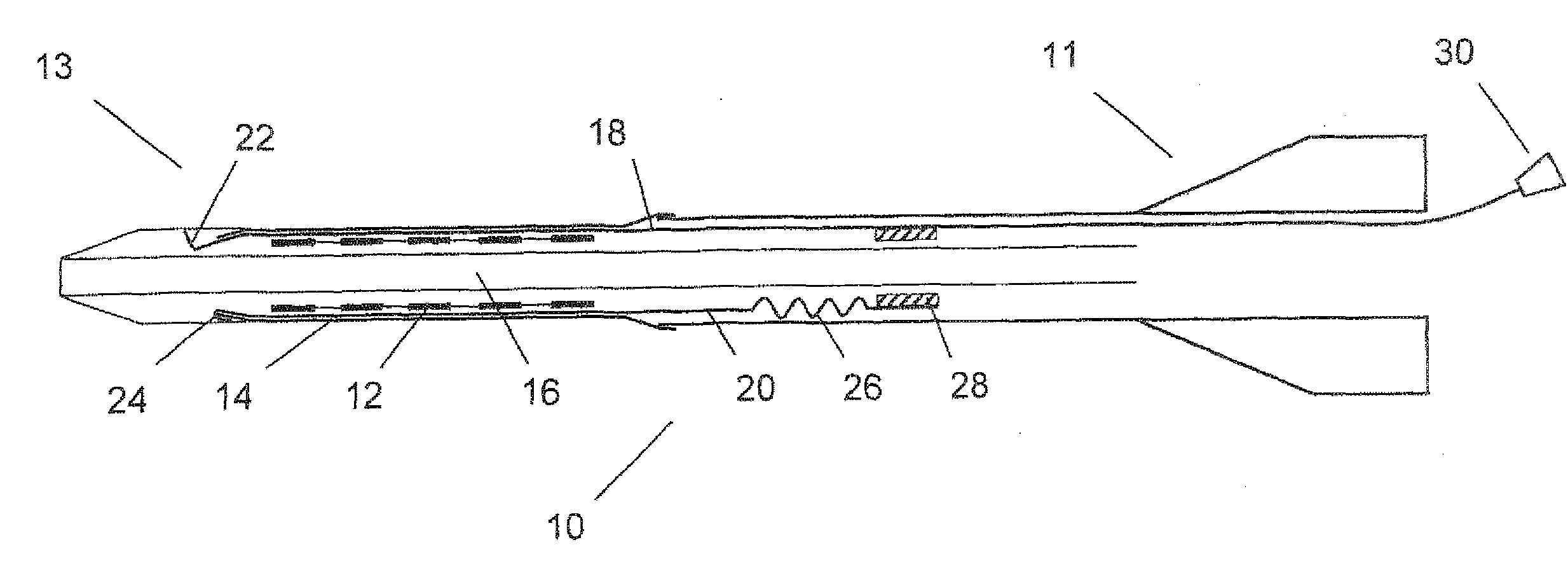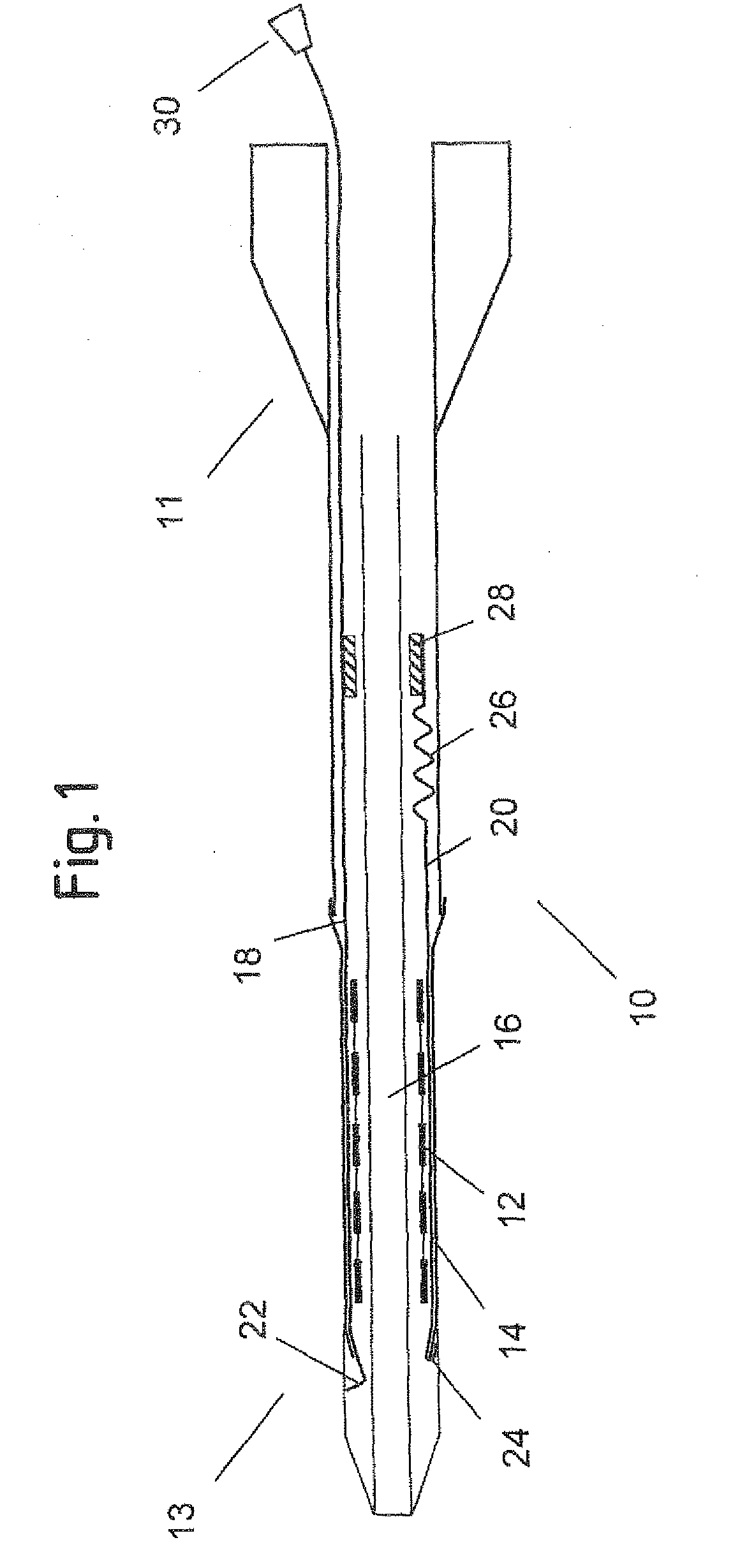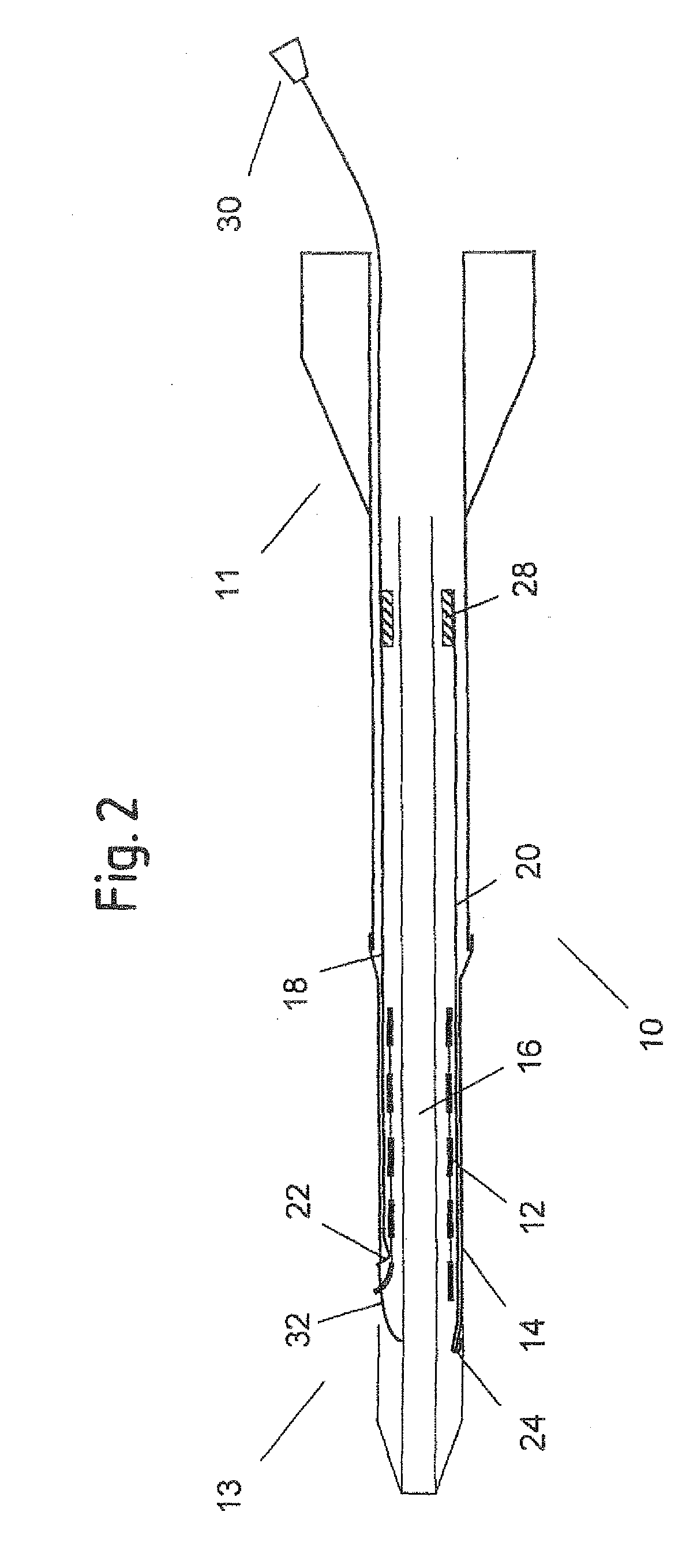Delivery system for a self-expanding device for placement in a bodily lumen
a delivery system and self-expanding technology, applied in the field of self-expanding devices for placement in bodily lumens, can solve the problems of small-sized endoprosthesis, uncomplicated procedure, and inability to meet the needs of patients, so as to reduce the risk of damage to the body tissue, facilitate and reliably remove, and simplify the sheath splitting mechanism
- Summary
- Abstract
- Description
- Claims
- Application Information
AI Technical Summary
Benefits of technology
Problems solved by technology
Method used
Image
Examples
Embodiment Construction
[0050]FIG. 1 shows an axial cross section of a catheter delivery system 10 according to a preferred embodiment in an initial position before expansion of the endoprosthesis. The delivery system 10 has a proximal end 11 and a distal end 13, comprising an elongate region 16 where a vascular self-expansible stent 12 is received. The stent 12 is surrounded and held in its radially compressed state by a sheath 14 made of PET. Further, the delivery system 10 comprises a first 18 and a second 20 pull element that both consist of a metallic wire and run between the stent 12 and the sheath 14 in the region 16 where the stent 12 is received. In this region 16, the wires of both pull elements 18, 20 are flattened along a circumferential direction of the stent 12, so as to have a ribbon-like shape. The first pull element 18 has a splitting section 22 at its distal end that is formed by a wire portion standing up in a radial direction of the delivery system 10 and a handle 30 attached to its pro...
PUM
 Login to View More
Login to View More Abstract
Description
Claims
Application Information
 Login to View More
Login to View More - R&D
- Intellectual Property
- Life Sciences
- Materials
- Tech Scout
- Unparalleled Data Quality
- Higher Quality Content
- 60% Fewer Hallucinations
Browse by: Latest US Patents, China's latest patents, Technical Efficacy Thesaurus, Application Domain, Technology Topic, Popular Technical Reports.
© 2025 PatSnap. All rights reserved.Legal|Privacy policy|Modern Slavery Act Transparency Statement|Sitemap|About US| Contact US: help@patsnap.com



